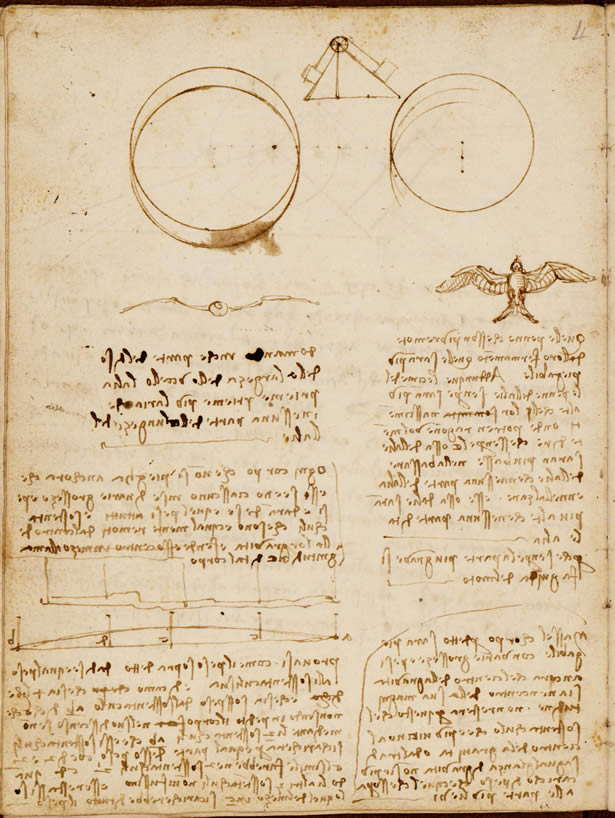Fol. 4v
«le penne che sono più lontane dalla loro attaccatura saranno più pieghevoli. Dunque le cime delle penne delle ali saranno sempre più alte rispetto al punto in cui nascono, per cui potremo ragionevolmente dire che le ossa delle ali saranno sempre più basse di ogni altra parte dell'ala nella fase di abbassamento, e più alte nella fase di innalzamento, talché la parte più pesante è la guida del moto»
(The feathers that are furthest from the place where they are attached are the most flexible. Thus the ends of the feathers of the wings will always be higher with respect to the point from which they grow, so that we can reasonably say that the bones of the wings will always be lower than any other part of the wing in the phase of lowering, and higher in the phase of raising, because the heavier part guides the motion.)
NOTE. For each page of Leonardo’s Codex we provide a brief summary, with the quotation of one that page’s most significant passages edited in modern Italian, with an English translation.
translation by Kim Williams

